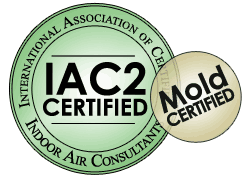Pyramid Home Inspections Call 951-536-1058 for a free price quote!

Pyramid Home Inspections
David Nasser 951-536-1058
Moreno Valley, CA 92553
Masonry Deterioration and Repair
sources: Wikipedia
National Park Service
Masonry is the building of structures from individual units laid in and bound together by mortar; the term masonry can also refer to the units themselves. The common materials of masonry construction are brick, stone, marble, granite, travertine, limestone, cast stone, concrete block, glass block, stucco, and tile. Masonry is generally a highly durable form of construction. However, the materials used, the quality of the mortar and workmanship, and the pattern in which the units are assembled can significantly affect the durability of the overall masonry construction.
Masonry is commonly used for the walls of buildings, retaining walls and monuments. Brick and concrete block are the most common types of masonry in use in industrialized nations and may be either weight-bearing or a veneer. Concrete blocks, especially those with hollow cores, offer various possibilities in masonry construction. They generally provide great compressive strength, and are best suited to structures with light transverse loading when the cores remain unfilled. Filling some or all of the cores with concrete or concrete with steel reinforcement (typically rebar) offers much greater tensile and lateral strength to structures.
Advantages
- The use of material such as bricks and stones can increase the thermal mass of a building.
- Most types of masonry typically will not require painting and so can provide a structure with reduced life-cycle costs.
- Masonry is very heat resistant and thus provides good fire protection.
- Masonry walls are more resistant to projectiles, such as debris from hurricanes or tornadoes.
- Masonry structures built in compression preferably with lime mortar can have a useful life of more than 500 years as compared to 30 to 100 for structures of steel or reinforced concrete.
Disadvantages
- Extreme weather causes degradation of masonry wall surfaces due to frost damage. This type of damage is common with certain types of brick, though rare with concrete blocks.
- Masonry tends to be heavy and must be built upon a strong foundation, such as reinforced concrete, to avoid settling and cracking.
- Save for concrete, masonry construction does not lend itself well to mechanization, and requires more skilled labor than stick-framing.
Structural limitations
Masonry boasts an impressive compressive strength (vertical loads) but is much lower in tensile strength (twisting or stretching) unless reinforced. The tensile strength of masonry walls can be strengthened by thickening the wall, or by building masonry piers (vertical columns or ribs) at intervals. Where practical, steel reinforcements can be added.
Masonry Deterioration Problems
Masonry deterioration problems include blistering, chipping, coving, cracking, crazing, crumbling, delamination, detachment, efflorescence, errosion, exfoliation, flaking, friability, peeling, pitting, rising damp, salt fretting, spalling, subflorescence, sugaring, surface crust / surface induration, and weathering. We will cover a few of these items below - for a complete rundown of historical masonry deterioration problems and known remediation / repair and preservation treatments, please see the National Park Service publication: "A Glossary of historic masonry deterioration problems and preservation treatments." Within the context of this document, the term "masonry" includes all types of natural stone, brick, terra cotta and adobe, as well as concrete and other cementitious materials. Preservation treatments are broadly defined to include almost everything done to or applied to historic masonry in an effort to prolong its life.
Blistering
Swelling accompanied by rupturing of a thin uniform skin both across and parallel to the bedding plane, usually a condition found on sandstone, but also on granite. Because blistering can be caused by de-icing salts and ground mOisture, it is generally found on a surface close to the ground. Blistering may remain a relatively constant condition scattered over the masonry surface but, more often, it eventually results in greater surface
peeling (exfoliation, delamination or spalling) .
Chipping
Small pieces or larger fragments of masonry separating from the masonry unit, often at corners or mortar joints. This may be the result of damage caused by later alterations or repairs, such as use of too hard a mortar, or by accident or through vandalism.
Flaking
Flaking is an early stage of peeling, exfoliation, delamination or spalling, and is best explained as the detachment of small, flat, thin pieces of the outer layers of stone from a larger piece of bUilding stone. Flaking is usually caused by capillary moisture or freeze/thaw cycles that occur within the masonry. The application of a water-repellent coating may result in flaking of the masonry when trapped moisture is forced to the surface. Flaking also commonly occurs in masonry coatings, such as paint, or stucco, and results from a loss of adhesion between the coating and the masonry substrate.
Peeling
Peeling of stone may be caused by an inherent defect in the surface of the masonry or the result of weathering. Improper application of a masonry coating may result in a lack of adhesion to the substrate, and cause the surface of the masonry or coating to flake or peel away from the substrate in strips or layers. Peeling may also describe a condition of terra cotta in which the glaze or slip has separated from the body of the terra cotta unit. It may be caused when slip is applied to a terra cotta unit that is too dry or a glaze is applied too thickly or to a dusty surface.
Pitting
The development or existence of small cavities in a masonry surface which may be caused by the differential removal of individual components of the masonry and may be the result of natural weathering or erosion of an inherently porous type of masonry. Pitting may also result from a harsh or abrasive cleaning method. Pitting of concrete can be caused by improper mixing, and usually occurs during the curing period.
Rising Damp
The suction of groundwater into the base of masonry walls through capillary action is called rising damp. Moisture is drawn up into the building walls and released at the interior and exterior surfaces where a horizontal wet stain or tidemark is left. The moisture often carries with it salts in solution, which can result in efflorescence and lead to deterioration of masonry, plaster, wood and paint. Rising damp, often the result of improper drainage, is a problem common to many older masonry structures, and one that is difficult to solve
completely.
Stonework
- Stone blocks used in masonry can be dressed or rough.
- Stone masonry utilizing dressed stones is known as ashlar masonry, whereas masonry using irregularly shaped stones is known as rubble masonry. Both rubble and ashlar masonry can be laid in coursed rows of even height through the careful selection or cutting of stones, but a great deal of stone masonry is uncoursed.
- Slipform stonemasonry produces a hybrid wall of reinforced concrete with a rubble stone face.
- Natural stone veneers over CMU, cast-in-place, or tilt-up concrete walls are widely used to give the appearance of stone masonry.
- Sometimes river rock of smooth oval-shaped stones is used as a veneer. This type of material is not favored for solid masonry as it requires a great amount of mortar and can lack intrinsic structural strength.
- Manufactured-stone, or cultured stone, veneers are popular alternatives to natural stones.
- Attractive natural stone has become more expensive in many areas and in some areas is practically unavailable.
- Manufactured-stone veneers are typically made from concrete.
- Natural stones from quarries around the world are sampled and recreated using molds, aggregate, and colorfast pigments.
To the casual observer there may be no visual difference between veneers of natural and manufactured stone.
Here's what our clients say about us
"Finding a good, reliable home inspector can be difficult a task. Luckily, one of my good friends referred David Nasser to me. Time and time again, David has displayed his professionalism by being informative, trustworthy, knowledgeable, punctual and personable. I refer him to all my clients.
Give him a call, you won't be disappointed!"
LC - EtopbrokerI am your Moreno Valley home inspector. Give me a call at 951-536-1058 to discuss your new home purchase.
Need a website for your business?




